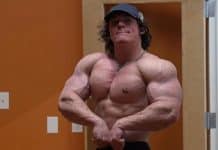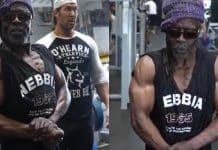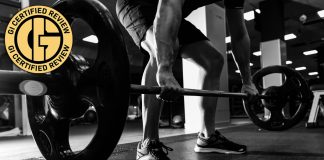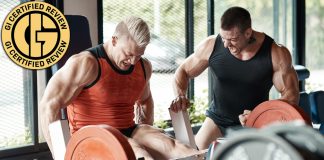
Natural Bodybuilder Jeff Nippard details how many reps for hypertrophy
Jeff Nippard, a well-known natural bodybuilder and powerlifter, has garnered a substantial following by integrating scientific research into his fitness advice. With over 4.6 million subscribers on YouTube, Nippard frequently shares insights on training and nutrition. In this post, we discuss Jeff Nippard’s optimal rep ranges for various fitness goals, particularly hypertrophy and strength.
Key Points on Rep Ranges for Hypertrophy

Hypertrophy (Muscle Growth): Nippard emphasizes that muscle growth can be achieved across a wide range of repetitions. Contrary to the traditional belief that the 6-12 rep range is superior for hypertrophy, he highlights that effective muscle building can occur with reps ranging from 5 to 50 per set. The critical factor is pushing muscles close to failure.
This approach aligns with the concept that muscles need to be sufficiently challenged to adapt and grow. Whether you are performing fewer reps with heavier weights or more reps with lighter weights, the key is to ensure that the muscles are worked intensely enough to stimulate growth. This broad range allows for flexibility in training programs, making it easier to keep workouts varied and interesting, which can be crucial for long-term adherence to a fitness regimen.
Practical Approach:
- Low Reps (3-5 per set): Ideal for compound movements such as squats and presses. These exercises recruit multiple muscle groups and benefit from the increased load, which helps in developing overall strength and muscle mass.
- Moderate Reps (5-15 per set): Suitable for a balanced approach in most exercises. This range is often considered optimal for a mix of strength and hypertrophy, providing a middle ground that can be adapted for various training goals.
- High Reps (15+ per set): More effective for isolation exercises like leg extensions and triceps pressdowns. High reps can help improve muscular endurance and bring about significant metabolic stress, which is another pathway to muscle growth.
This variety ensures that different muscle fibers are targeted, promoting overall muscle development. By incorporating a range of rep schemes, individuals can address both the slow-twitch and fast-twitch muscle fibers, maximizing hypertrophy.
Key Points on Rep Ranges for Strength
Strength: For those prioritizing strength over size, Nippard underscores the principle of specificity. To lift heavier weights, one must train with heavier weights. This means focusing on lower rep ranges with higher weights to maximize neuromuscular adaptations that lead to strength gains.
Optimal Rep Range:
- Heavy Lifting (1-5 reps per set): Essential for building maximal strength. This low rep range allows for the use of maximal loads, which is crucial for training the nervous system to handle heavier weights.
- Moderate Loads (5-10 reps per set): Should still be included to support muscle growth and endurance. While these are slightly higher rep ranges, they still involve substantial weights and contribute to overall strength and hypertrophy.
Nippard reinforces that a bigger muscle generally translates to a stronger muscle, hence incorporating various rep ranges can be beneficial even for strength training. By mixing different rep ranges, lifters can ensure they are not only building muscle mass but also improving the functional capacity of their muscles.
Additional Insights from Other Fitness Experts
Mike O’Hearn and Jay Cutler, both prominent figures in the fitness industry, also contribute to the discussion. O’Hearn emphasizes the importance of technique and tempo over merely counting reps. Proper control and muscle contraction are crucial for effective training, whether the goal is hypertrophy or strength.
Technique and Tempo:
- Controlled Movements: Performing each rep with control ensures that the target muscles are engaged throughout the movement, maximizing muscle activation and minimizing the risk of injury.
- Tempo: The speed at which reps are performed can influence the type of muscle fiber recruitment and the overall intensity of the exercise. Slower tempos can increase time under tension, which is beneficial for muscle growth, while explosive tempos can improve power and strength.
O’Hearn’s insights highlight that how you perform your reps can be just as important as the number of reps you perform. Focusing on quality over quantity ensures that each rep is contributing to your overall fitness goals.
Conclusion
Jeff Nippard’s evidence-based approach highlights that effective training isn’t confined to a single rep range. By incorporating a mix of low, moderate, and high reps tailored to specific exercises and goals, individuals can optimize their muscle growth and strength. His insights, along with contributions from other fitness experts, underscore the importance of effort, technique, and variety in training routines.
For those looking to maximize their training efforts, understanding and applying these principles can lead to more effective and efficient workouts. Whether aiming for hypertrophy or strength, the key lies in pushing muscles to their limits and maintaining proper form. Additionally, integrating different rep ranges and focusing on proper technique can help keep workouts fresh and engaging, promoting long-term adherence and consistent progress.
In conclusion, whether you are a seasoned lifter or a beginner, embracing a flexible and well-rounded approach to rep ranges can enhance your training outcomes. By pushing your muscles close to failure, varying your rep ranges, and focusing on technique, you can achieve a balanced and effective training regimen that supports both muscle growth and strength development.
Let us know what you think in the comments below. Also, be sure to follow Generation Iron on Facebook, Twitter, and Instagram.















